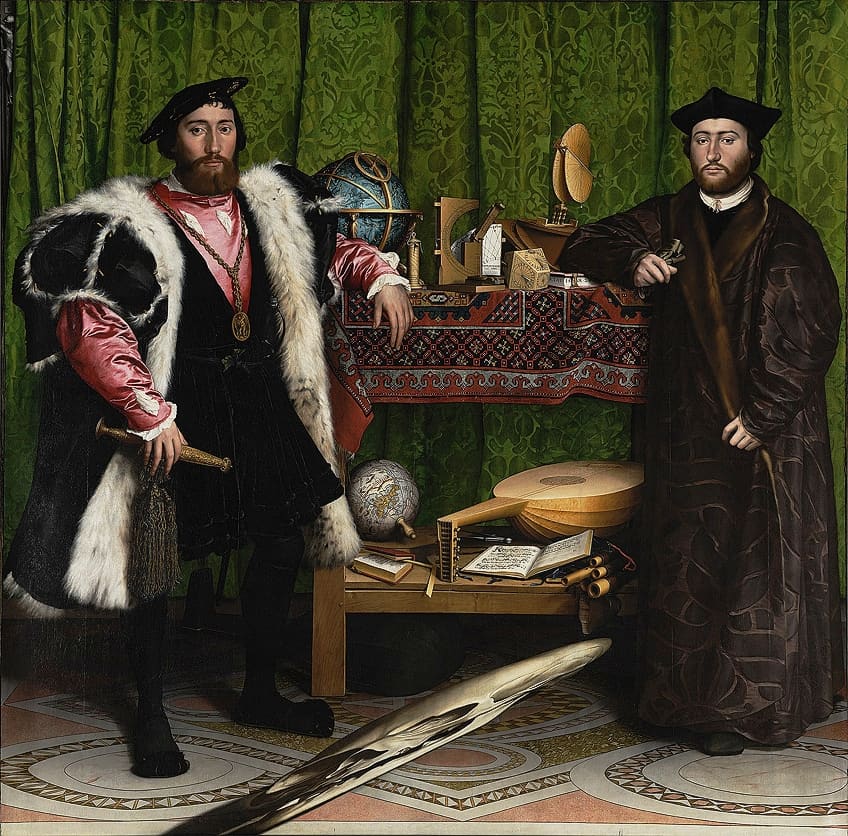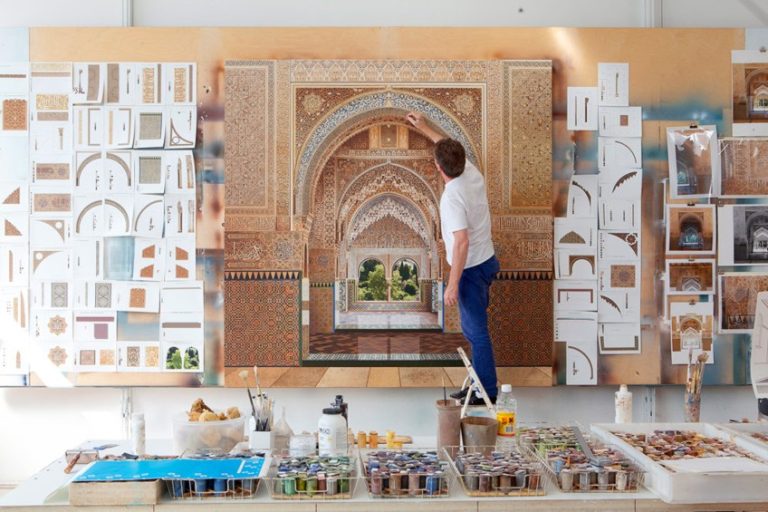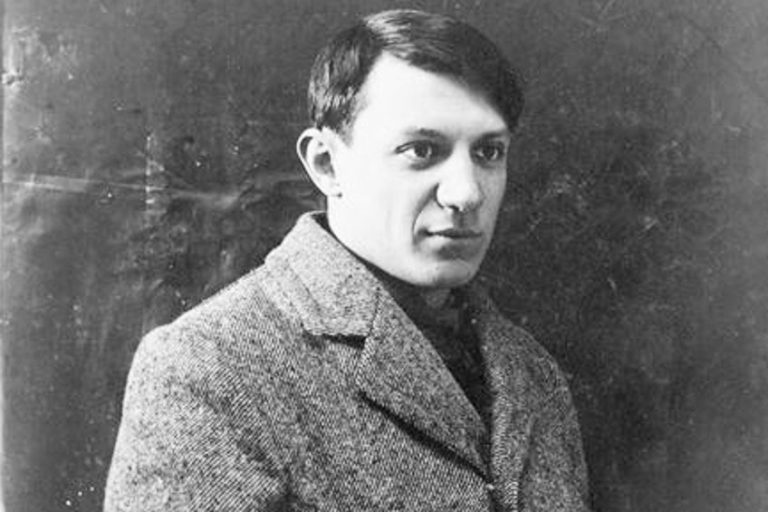Famous European Paintings – Iconic Artworks Throughout History
Explore the timeless masterpieces that have shaped the tapestry of European art with this captivating journey into the world of famous paintings. From the enigmatic smile of the Mona Lisa to the swirling skies of Van Gogh’s Starry Night, each canvas tells a story of artistic innovation, cultural richness, and human emotion. Join us as we delve into the depths of creativity, exploring the brushstrokes of renowned artists and unraveling the secrets behind some of the most iconic works that continue to inspire awe and admiration across the globe.
Table of Contents
- 1 Key Takeaways
- 2 Origins and Evolution of European Art
- 3 Landmark Works and Master Artists
- 3.1 Primavera (1477 – 1482) by Sandro Botticelli
- 3.2 Mona Lisa (1503 – 1506) by Leonardo da Vinci
- 3.3 The Creation of Adam (1508 – 1512) by Michelangelo
- 3.4 The School of Athens (1509 – 1511) by Raphael
- 3.5 The Ambassadors (1533) by Hans Holbein the Younger
- 3.6 Judith Slaying Holofernes (1612 – 1613) by Artemisia Gentileschi
- 3.7 The Night Watch (1642) by Rembrandt van Rijn
- 3.8 Girl with a Pearl Earring (1665) by Johannes Vermeer
- 3.9 Starry Night (1889) by Vincent van Gogh
- 3.10 The Kiss (1907 – 1908) by Gustav Klimt
- 4 Preservation and Presentation of Art
- 5 Frequently Asked Questions
Key Takeaways
- European paintings provide a visual record of the cultural and historical landscapes from which they originated.
- The evolution of art from the European Renaissance to the 20th century showcases the continent’s rich and diverse artistic heritage.
- Museums and galleries across Europe are dedicated to conserving and displaying these historic masterpieces for public education and enjoyment.
Origins and Evolution of European Art
Europe is home to some of the world’s most iconic paintings, encompassing a vast array of periods and movements within art history. From the meticulous detailed works of Jan van Eyck to the emotionally charged scenes depicted by Caravaggio, each painting offers a glimpse into the eras and cultures from which they emerged. These masterpieces are not only treasured for their aesthetic appeal but also for their historical significance, providing insight into the social and political milieu of their time.

The Renaissance period marks a pivotal moment in the evolution of European art, with Italian masters such as Leonardo da Vinci and Michelangelo setting new standards for artistic achievement. Art continued to evolve through the ages, with every movement from Baroque to Impressionism leaving a lasting imprint on the canvas of European art history. This rich tapestry is woven together by the works of great artists, each contributing unique techniques and perspectives. Today, the preservation and display of these works—be it in the grand halls of The Metropolitan Museum of Art or within the intimate spaces of the Courtauld Institute of Art—ensure that the legacy of Europe’s artistic heritage continues to inspire and educate.
Italian Renaissance
The Italian Renaissance was a period of great cultural change and achievement that began in Italy during the 14th century and lasted until the 17th century. Marked by a rebirth of interest in the classical art and philosophy of ancient Greece and Rome, it stood out for its advancements in painting techniques.
- Leonardo da Vinci is celebrated for The Last Supper and Mona Lisa, which are renowned for their innovative composition and human emotion portrayal.
- Michelangelo Buonarroti, known for his mastery of the human form, created epic frescoes such as the Sistine Chapel Ceiling.
- Raphael and Botticelli, with works like The School of Athens and The Birth of Venus respectively, contributed greatly to the canon of Italian Renaissance art, characterized by its balance, harmony, and perspective.
Florence and Rome were the main hubs of this seismic cultural shift, with patrons such as the Medici family playing a crucial role in the promotion and commissioning of artworks.
Dutch Golden Age
The Dutch Golden Age spanned the 17th century and was a period of great wealth and cultural achievement for the Netherlands. This period saw an explosion in the production of art, especially painting, where Dutch realism and attention to detail were highly valued.
- Rembrandt van Rijn is recognized for his deep psychological insight and innovative use of lighting and shadow, seen in masterpieces like The Night Watch.
- Jan van Eyck is often credited with pioneering oil painting, a technique that allowed for great precision and vivid color, as demonstrated in The Arnolfini Portrait.

Art was a common commodity in Dutch society, with the middle-class buying and commissioning works, leading to a diverse array of subjects including landscapes, still lifes, and genre scenes.
French Impressionism
French Impressionism emerged in the second half of the 19th century, characterized by a tendency to capture fleeting moments and the effects of light and color with loose brushwork.
- Claude Monet and Édouard Manet were central figures in this movement. Monet’s Impression, Sunrise gave the movement its name, while Manet’s Luncheon on the Grass challenged traditional compositional norms.
- Vincent van Gogh, though not a traditional impressionist, was influenced by the style. His works, such as Starry Night, are noted for their emotional depth and bold use of color.
Paris was the heart of Impressionism, with its ateliers, salons, and the pivotal independent exhibitions pioneered by the Impressionists, which defied the conservative art establishment.
Landmark Works and Master Artists
European art has bestowed countless landmark works upon the global cultural heritage, each carrying unique historical, artistic, or societal significance. Master artists like Leonardo da Vinci and Vincent van Gogh have become household names, with their creations often emblematic of entire eras or movements within the art world.

Primavera (1477 – 1482) by Sandro Botticelli
| Artist | Sandro Botticelli (c. 1445 – 1510) |
| Date of Work | 1477 – 1482 |
| Medium | Tempera on panel |
| Location | Uffizi Gallery, Florence, Italy |
Botticelli’s Primavera is a masterpiece of the Italian Renaissance, depicting a scene of mythological figures in a lush spring landscape. The painting is renowned for its intricate symbolism, representing the theme of rebirth and the arrival of spring.
The graceful figures, including Venus, Flora, and the Three Graces, embody ideals of beauty and classical mythology, making Primavera a quintessential example of Renaissance art.

Mona Lisa (1503 – 1506) by Leonardo da Vinci
| Artist | Leonardo da Vinci (1452 – 1519) |
| Date of Work | 1503 – 1506 |
| Medium | Oil on poplar |
| Location | Louvre Museum, Paris, France |
Leonardo da Vinci’s Mona Lisa is perhaps the most famous painting in the world, known for its enigmatic smile and masterful use of sfumato technique. The portrait of Lisa Gherardini, a Florentine noblewoman, is a masterpiece of Renaissance art, showcasing Leonardo’s skill in capturing subtle expressions and creating a sense of depth. The painting’s mysterious aura and Leonardo’s innovative techniques have made it an enduring icon of European art.

The Creation of Adam (1508 – 1512) by Michelangelo
| Artist | Michelangelo (1475 – 1564) |
| Date of Work | 1508 – 1512 |
| Medium | Fresco |
| Location | Sistine Chapel, Vatican City, Rome |
Michelangelo’s The Creation of Adam is a central panel of the Sistine Chapel ceiling, depicting the iconic moment from the Book of Genesis where God breathes life into Adam. The painting is celebrated for its depiction of the human form, with the dynamic and powerful figures of God and Adam reaching out to each other.
This masterpiece exemplifies Michelangelo’s mastery of anatomy, composition, and narrative storytelling.

The School of Athens (1509 – 1511) by Raphael
| Artist | Raphael (1483 – 1520) |
| Date of Work | 1509 – 1511 |
| Medium | Fresco |
| Location | Apostolic Palace, Vatican City |
Raphael’s The School of Athens is a fresco located in the Vatican depicting a gathering of great philosophers, scientists, and thinkers from classical antiquity. The painting is renowned for its intricate composition, with each figure representing a different school of thought or discipline. Raphael’s skill in creating lifelike figures and his harmonious use of space and perspective make The School of Athens a masterpiece of High Renaissance art.

The Ambassadors (1533) by Hans Holbein the Younger
| Artist | Hans Holbein the Younger (c. 1497 – 1543) |
| Date of Work | 1533 |
| Medium | Oil on oak |
| Location | National Gallery, London, United Kingdom |
Hans Holbein the Younger’s The Ambassadors is a portrait of two French ambassadors to the court of Henry VIII of England, Jean de Dinteville and Georges de Selve. The painting is notable for its meticulous detail, including symbolic objects such as a globe, books, and musical instruments.
Holbein’s precision in capturing textures and his subtle use of symbolism make The Ambassadors a celebrated example of Northern Renaissance portraiture.

Judith Slaying Holofernes (1612 – 1613) by Artemisia Gentileschi
| Artist | Artemisia Gentileschi (1593 – 1653) |
| Date of Work | 1612 – 1613 |
| Medium | Oil on canvas |
| Location | Uffizi Gallery, Florence, Italy |
Artemisia Gentileschi’s Judith Slaying Holofernes is a powerful portrayal of the biblical story where Judith, a Jewish widow, saves her city by beheading the Assyrian general Holofernes. The painting is famous for its dramatic composition and the intense emotion captured in Judith’s face as she carries out the heroic act. Gentileschi’s skillful use of light and shadow adds depth to the scene, making it a notable example of Baroque art and a testament to Gentileschi’s talent as a female artist in a male-dominated era.

The Night Watch (1642) by Rembrandt van Rijn
| Artist | Rembrandt van Rijn (1606 – 1669) |
| Date of Work | 1642 |
| Medium | Oil on canvas |
| Location | Rijksmuseum, Amsterdam, Netherlands |
Rembrandt’s The Night Watch is a monumental group portrait of a civic guard company in Amsterdam during the Dutch Golden Age. The painting is renowned for its dynamic composition, with figures in various poses and expressions, and Rembrandt’s mastery of light and shadow creates a sense of drama and movement.
The Night Watch is celebrated for its innovative approach to portraiture and its influence on later artists, solidifying Rembrandt’s status as a master of Dutch Baroque painting.

Girl with a Pearl Earring (1665) by Johannes Vermeer
| Artist | Johannes Vermeer (1632 – 1675) |
| Date of Work | 1665 |
| Medium | Oil on canvas |
| Location | Mauritshuis, The Hague, Netherlands |
Johannes Vermeer’s Girl with a Pearl Earring is an iconic portrait known for the enigmatic gaze of the young woman and the luminous pearl earring. The painting is famous for its use of light and shadow, highlighting the girl’s face against a dark background and creating a sense of intimacy and mystery. Vermeer’s meticulous attention to detail, especially in capturing textures and reflections, makes Girl with a Pearl Earring a timeless masterpiece of Dutch Golden Age art.

Starry Night (1889) by Vincent van Gogh
| Artist | Vincent van Gogh (1853 – 1890) |
| Date of Work | 1889 |
| Medium | Oil on canvas |
| Location | Museum of Modern Art, New York City, United States |
Vincent van Gogh’s Starry Night is a mesmerizing landscape depicting a swirling night sky above a tranquil village. The painting is famous for its bold use of color and expressive brushwork, reflecting Van Gogh’s emotional and imaginative interpretation of the natural world.
Starry Night is a quintessential example of Post-Impressionist art, showcasing Van Gogh’s unique style and his ability to evoke mood and atmosphere through vibrant colors and dynamic forms.

The Kiss (1907 – 1908) by Gustav Klimt
| Artist | Gustav Klimt (1862 – 1918) |
| Date of Work | 1907 – 1908 |
| Medium | Oil on canvas |
| Location | Österreichische Galerie Belvedere, Vienna |
Gustav Klimt’s The Kiss is a symbolist masterpiece depicting a couple locked in an intimate embrace, enveloped in patterns of gold and symbolic motifs. The painting is famous for its ornate and decorative style, characterized by Klimt’s use of gold leaf and intricate details inspired by Byzantine art. The Kiss is a celebrated example of Art Nouveau and Symbolism, capturing themes of love, passion, and transcendence in a visually stunning composition.

Preservation and Presentation of Art
The safeguarding and display of European paintings involve meticulous conservation efforts and strategic curation by institutions, ranging from world-renowned museums to private galleries.
Museums
Museums such as the Louvre in Paris, the National Gallery in London, and the Uffizi Gallery in Florence play a critical role in the preservation of European paintings. For instance, institutions like these often house iconic works like the Ghent Altarpiece and are instrumental in providing the necessary environment to protect these treasures from deterioration.
- Louvre Museum, France: Specializes in both Old Master paintings and Art Nouveau pieces, utilizing cutting-edge conservation techniques and extensive staff expertise.
- National Gallery, London: Offers educational videos to elucidate the artwork’s significance, aiding in cultural preservation.
- Uffizi Gallery, Italy: Often receives bequests increasing its collection, demanding meticulous cataloging and conservation strategies.

Staff at these museums are tasked with the responsibility of maintaining optimal conditions pertaining to light, humidity, and temperature to forestall the aging of paintings. Regular restoration projects ensure that damage is repaired, frequently in collaboration with conservation scientists to analyze and apply non-invasive techniques.
Galleries and Private Collections
While galleries and private collections may not always match the scale of museums, they contribute substantially to the presentation of European art. Galleries in artistic hubs like Rome and Siena cathedral often hold significant pieces from regions like Italy and France, where they might focus on exhibiting respective local art movements within historical contexts.
- Rome and Florence: These Italian cities are renowned for their rich array of art galleries, showcasing regional evolution and preservation efforts.
- Paris: Besides the Louvre, numerous galleries in Paris celebrate the heritage of French painting from Art Nouveau to contemporary works.

Private collectors ensure the safeguarding of art by adhering to professional standards of care and often collaborate with museums for temporary exhibitions or loans. It is the synergy between public institutions and private entities that continues to protect the legacy of European paintings, allowing the public to relish these works in a manner that is both educational and inspiring.
As we conclude this exploration of famous European paintings, we are reminded of the enduring power of art to transcend time and space. Each stroke of the brush, each play of light and shadow, carries with it a piece of history, culture, and emotion. These masterpieces not only adorn museum walls but also resonate deeply within our hearts, sparking conversations, igniting imaginations, and connecting us across generations. They are windows into the human experience, capturing moments of beauty, passion, and reflection that continue to inspire and captivate us, reminding us of the profound impact that art has on our lives and our shared humanity.
Frequently Asked Questions
What Are Some Iconic Paintings from European Art History?
Iconic European paintings include Primavera by Sandro Botticelli, Mona Lisa by Leonardo da Vinci, The Ambassadors by Hans Holbein the Younger, and Rembrandt van Rijn’s The Night Watch. Other notable works are Judith Slaying Holofernes by Artemisia Gentileschi and The Kiss by Gustav Klimt, which exemplify the range of styles and periods in the European art canon.
Who Are Considered the Most Influential European Painters?
Leonardo da Vinci, Sandro Botticelli, and Rembrandt van Rijn are among the most influential European painters. Their works have shaped the artistic landscape of Europe and continue to influence artists around the world. Other significant figures include Vincent van Gogh, Paul Cézanne, and Gustav Klimt, all of whom have made indelible marks on art history through their innovation and mastery of technique.
What Are the Major European Art Styles and Movements?
Major European art styles and movements encompass a range of periods such as the Baroque, with its dramatic emotion and bold use of light and shadow, and the Art Nouveau style, characterized by its flowing lines and natural forms. Furthermore, the 19th-century saw the emergence of French Impressionism, led by artists like Claude Monet, which revolutionized the approach to color and brushwork in painting. These movements, among others, have defined the artistic heritage and evolution of Europe.
Isabella studied at the University of Cape Town in South Africa and graduated with a Bachelor of Arts majoring in English Literature & Language and Psychology. Throughout her undergraduate years, she took Art History as an additional subject and absolutely loved it. Building on from her art history knowledge that began in high school, art has always been a particular area of fascination for her. From learning about artworks previously unknown to her, or sharpening her existing understanding of specific works, the ability to continue learning within this interesting sphere excites her greatly.
Her focal points of interest in art history encompass profiling specific artists and art movements, as it is these areas where she is able to really dig deep into the rich narrative of the art world. Additionally, she particularly enjoys exploring the different artistic styles of the 20th century, as well as the important impact that female artists have had on the development of art history.
Learn more about Isabella Meyer and the Art in Context Team.
Cite this Article
Isabella, Meyer, “Famous European Paintings – Iconic Artworks Throughout History.” Art in Context. April 11, 2024. URL: https://artincontext.org/famous-european-paintings/
Meyer, I. (2024, 11 April). Famous European Paintings – Iconic Artworks Throughout History. Art in Context. https://artincontext.org/famous-european-paintings/
Meyer, Isabella. “Famous European Paintings – Iconic Artworks Throughout History.” Art in Context, April 11, 2024. https://artincontext.org/famous-european-paintings/.











